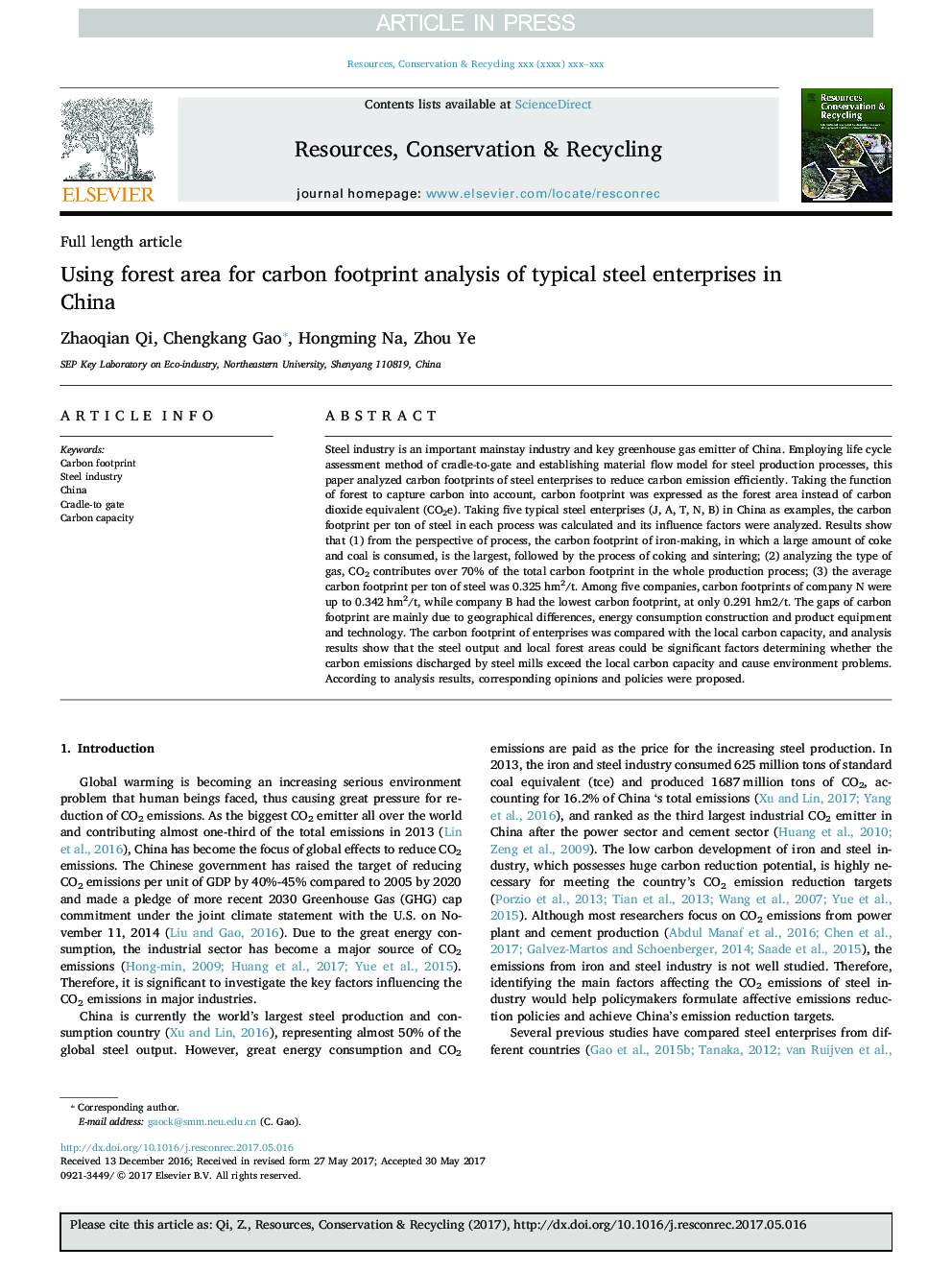| کد مقاله | کد نشریه | سال انتشار | مقاله انگلیسی | نسخه تمام متن |
|---|---|---|---|---|
| 7494435 | 1485660 | 2018 | 9 صفحه PDF | دانلود رایگان |
عنوان انگلیسی مقاله ISI
Using forest area for carbon footprint analysis of typical steel enterprises in China
ترجمه فارسی عنوان
با استفاده از منطقه جنگل برای تجزیه و تحلیل رد پای کربن شرکت های فولاد معمول در چین
دانلود مقاله + سفارش ترجمه
دانلود مقاله ISI انگلیسی
رایگان برای ایرانیان
کلمات کلیدی
رد پای کربن، صنعت فولاد، چین، گهواره به دروازه، ظرفیت کربن،
موضوعات مرتبط
مهندسی و علوم پایه
مهندسی انرژی
انرژی های تجدید پذیر، توسعه پایدار و محیط زیست
چکیده انگلیسی
Steel industry is an important mainstay industry and key greenhouse gas emitter of China. Employing life cycle assessment method of cradle-to-gate and establishing material flow model for steel production processes, this paper analyzed carbon footprints of steel enterprises to reduce carbon emission efficiently. Taking the function of forest to capture carbon into account, carbon footprint was expressed as the forest area instead of carbon dioxide equivalent (CO2e). Taking five typical steel enterprises (J, A, T, N, B) in China as examples, the carbon footprint per ton of steel in each process was calculated and its influence factors were analyzed. Results show that (1) from the perspective of process, the carbon footprint of iron-making, in which a large amount of coke and coal is consumed, is the largest, followed by the process of coking and sintering; (2) analyzing the type of gas, CO2 contributes over 70% of the total carbon footprint in the whole production process; (3) the average carbon footprint per ton of steel was 0.325Â hm2/t. Among five companies, carbon footprints of company N were up to 0.342Â hm2/t, while company B had the lowest carbon footprint, at only 0.291Â hm2/t. The gaps of carbon footprint are mainly due to geographical differences, energy consumption construction and product equipment and technology. The carbon footprint of enterprises was compared with the local carbon capacity, and analysis results show that the steel output and local forest areas could be significant factors determining whether the carbon emissions discharged by steel mills exceed the local carbon capacity and cause environment problems. According to analysis results, corresponding opinions and policies were proposed.
ناشر
Database: Elsevier - ScienceDirect (ساینس دایرکت)
Journal: Resources, Conservation and Recycling - Volume 132, May 2018, Pages 352-360
Journal: Resources, Conservation and Recycling - Volume 132, May 2018, Pages 352-360
نویسندگان
Zhaoqian Qi, Chengkang Gao, Hongming Na, Zhou Ye,
